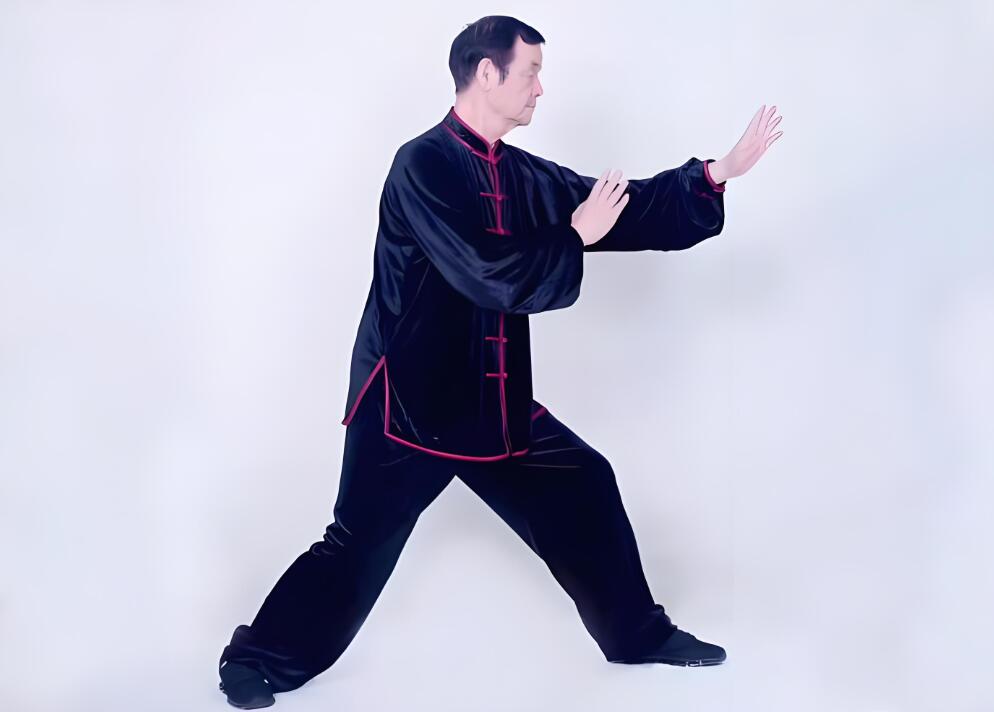
The righteousness of heaven and earth comes from nature, and also depends on personal cultivation and maintenance. Tai Chi is a comprehensive self-training method. Through the operation of internal qi and the high coordination of body and mind, the unity of form and spirit and the improvement of one’s own quality can be achieved.
Reasonable and easy
All movements should conform to the physiological structure. For example, the spleen and stomach are on the left side of the human body, belonging to the earth, responsible for gestation and tranquility; the liver and gallbladder are on the right side of the human body, belonging to the wood, responsible for growth and activity. The right leg is the main kick, and the left leg mainly plays a supporting and fixing role. On the contrary, the same movement, done symmetrically, will cause physical discomfort, which is an example of not conforming to the physiological structure.
The movements of Wudang Zhaobao Tai Chi can be large or small, fast or slow, and in various forms, but its essence lies in the combination of movement and stillness, the unity of form and spirit, and the purpose of training and nourishing righteousness through imitation, learning and practice. This kind of training emphasizes not seeking danger and strangeness but simplicity. It enhances the flow and balance of qi in the body, rather than just pursuing the external beauty or complex techniques of the movement.
For example, the back sweep of Zhaobao Tai Chi does not pursue speed and beauty, but it can fully realize the effective attack and defense intention. Another example is the series of movements from front and back, wild horse splitting mane to jade girl shuttle, which makes the body rotate 360 degrees continuously. These movements are done in one go, and each 45-degree rotation contains a specific meaning, not just a simple turn, which practitioners need to experience seriously. When practitioners focus too much on the performance of skills, they may ignore the inner spirit of Tai Chi: to achieve precision through simplicity. Practitioners should adhere to the principle of striving for precision, constantly remove the coarse and retain the fine, work hard on the subtleties, and achieve a high degree of consistency between form and spirit.
Adjustment and adaptation in practice
The practice of Tai Chi is not isolated, but needs to be adjusted appropriately according to the time, place and personal specific circumstances. For example, daytime is suitable for more intense practice, such as various Tai Chi moves and standing; at night, when the yang energy of the day gradually converges, it is more suitable for gentle Qigong and meditation practice.
At noon, when the Yang Qi reaches its peak of the day, practicing Tai Chi standing or boxing not only conforms to the natural law of “nourishing Yang during the day”, but also best enhances the body’s Yang Qi. At night, on the contrary, it is suitable for meditation and breathing to help Yang Qi inward and nourish the body’s internal organs.
Adjustment and adaptation are not only reflected in the physical level, but also involve the use of consciousness. This means that practitioners need to continuously adjust their attention, consciousness and breathing during practice to ensure that they are coordinated and smooth with body movements.
Use of consciousness: In Tai Chi, consciousness should focus on the inner perception of power (the connection and coordination between various parts) and the flow of Qi. Through the concentration of consciousness, practitioners can more deeply feel the ups and downs of power and the path of Qi in each movement. The perception of body temperature, touch of skin, feeling of acupoints, and the surrounding environment will increase. This inner awareness helps practitioners gradually improve the accuracy of their movements and the control of inner power in continuous practice.
The core guiding principle of adjustment
In Tai Chi, the core guiding principle of adjustment is “not excessive”. “Too much is as bad as too little.” Both not doing enough and doing too much are mistakes that are easy to make. And doing too much may have greater disadvantages. Exceeding the body’s tolerance and limit may cause damage to the body. Forcing to complete specific movements will cause physical tension and bad habits. Tai Chi practice should follow a gradual and scientific training method, and should not be impatient for success.
“Not too much” means that practitioners should avoid using unnecessary force in the execution of movements, but achieve the greatest effect with minimal effort. This principle emphasizes effectiveness, prompting practitioners to achieve smooth and powerful movements through fine adjustments and subtle force control while maintaining physical and mental relaxation.
High adaptability: “Complete your intention at the best time, best position, and best action.” The best time refers to reaction. When the opportunity appears, you must seize it and make a move without thinking, which reflects the fleeting nature of opportunities. Just like a look and expression may change the entire conversation process, and a subtle movement of the other party will reveal the intention. The best position is an accurate sense of distance, and the accurate grasp of the distance without being attacked is the key to winning by surprise. This stems from accurate and quick judgment of the situation of both the enemy and ourselves.
